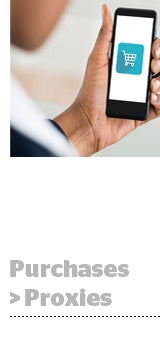 Cardlytics, which helps advertisers like Starbucks activate audience data from bank partners like Bank of America, Citibank and PNC, is working with Drawbridge to assess how cross-device exposures affect online and in-store purchases.
Cardlytics, which helps advertisers like Starbucks activate audience data from bank partners like Bank of America, Citibank and PNC, is working with Drawbridge to assess how cross-device exposures affect online and in-store purchases.
Drawbridge is the first cross-device platform to access Cardlytics Measurement, a tool that gauges metrics like average basket size and the view purchase rate (VPR), which determines sales revenue generated by exposure to marketing messages.
The metric could reveal, for instance, how many purchases were made for every thousand impressions or the frequency (and drop-offs) of purchases over time.
Because Cardlytics’ bank customers are so highly regulated, its own system sits behind its banking partners’ firewall.
Cardlytics does not “own, touch or want personally identifiable information,” according to company CMO Dani Cushion. “We are able to perform an [anonymous] match if we work with a client programmatically, but it’s not something we do in-house.”
In other words, to get closer to the one-to-one targeting level, Cardlytics would partner with others through an “anonymous safe harbor” to maintain data integrity.
“If a major retailer knows everything they can possibly know about their own customer with their CRM database, they lose a little bit of sight once that customer walks outside the door, so we help fill in the gaps around how they’re spending the rest of the time,” Cushion said. “These insights are based on real sales data, not, ‘These are strong intenders.’”
Though Cardlytics’ first entry into cross-device matching is with Drawbridge, the relationship is not exclusive, as Cardlytics considers more programmatic access to its bank and purchasing data.
It recently gave the green light on its first demand-side platform integration to The Trade Desk, though another integration with a major DSP is in the works.
“When you talk about cross-device, you need to talk about analytics, attribution and the reporting to go along with that,” said Brian Ferrario, VP of marketing for Drawbridge. “You can package insights about what return an advertiser’s media spend drove, but Cardlytics can now show us, ‘Did it drive sales?’”
Location has largely been a proxy for a purchase, which manifests as a metric like how many visitors a store had or how many people walked by, but Ferrario said measuring beyond that through to the actual buy was what was missing.
The Power Of Purchase History
More financial services providers are offering their sales data to media companies. American Express, for instance, is partnering with Viacom to help TV advertisers match purchase insights to viewership data.
It’s part of a broader trend where advertisers want to connect a bunch of disparate data sets – television and location-based data among them – back to the purchase record, said Srishti Gupta, president of the Media Center for Excellence for shopper marketing and measurement firm IRI.
IRI is partnered with major networks to help tie the impact of television to trade promotions in-store, as well as use more purchase-based data for audience extension from the TV targeting perspective, Gupta said.
But IRI also has a sizable partnership with location services platform PlaceIQ to help advertisers (mainly CPGs) match CRM and purchase-based information to location.
“In the past, [sales and location data] was mostly used in isolation or mostly used by retailers to determine, ‘Did someone visit my store?’” Gupta said. “It wasn’t applied to, ‘Did it influence a conversion?’ or ‘Did that person purchase once but never returned again?’ We’ve seen the emergence of a new use case.”













